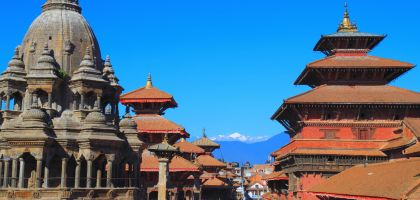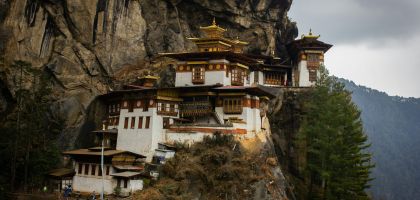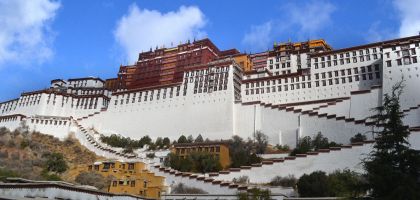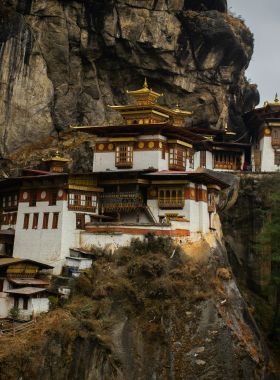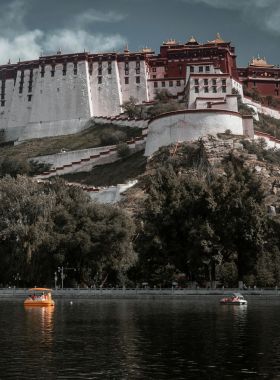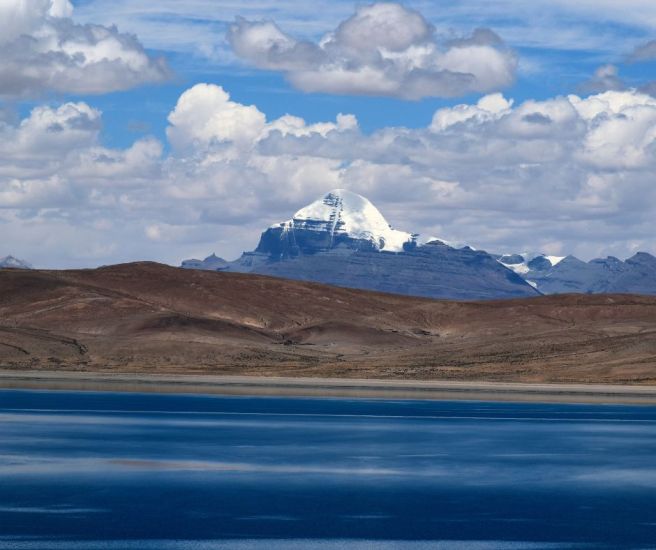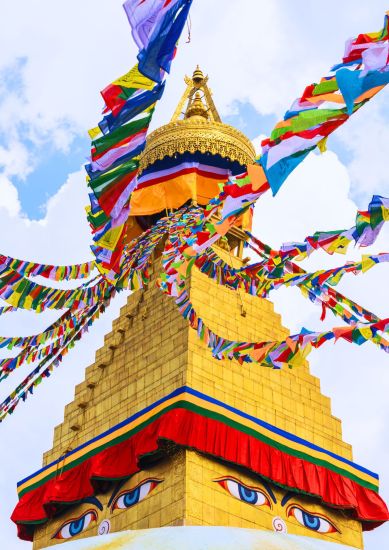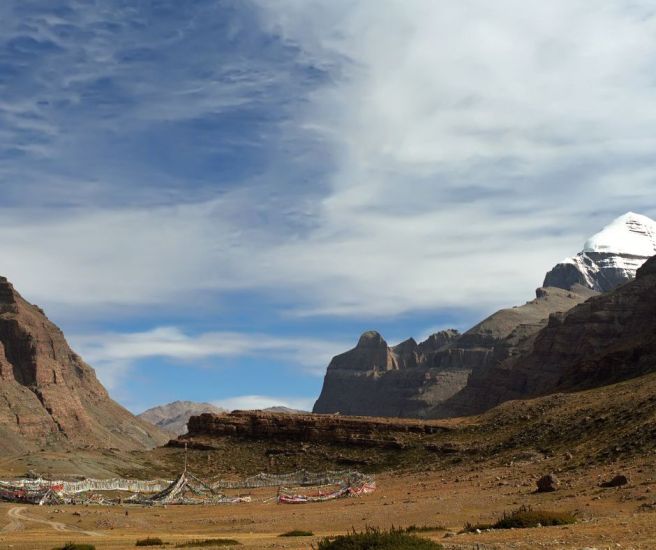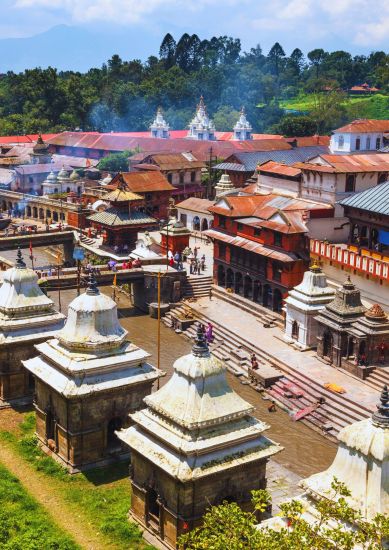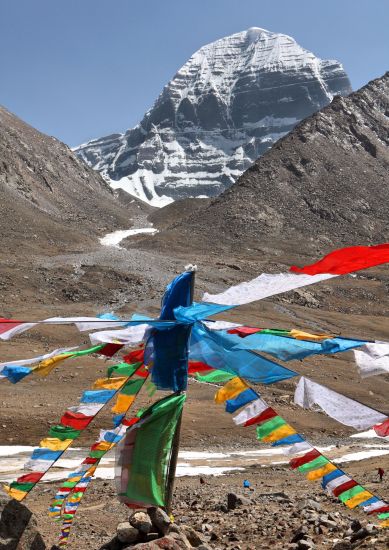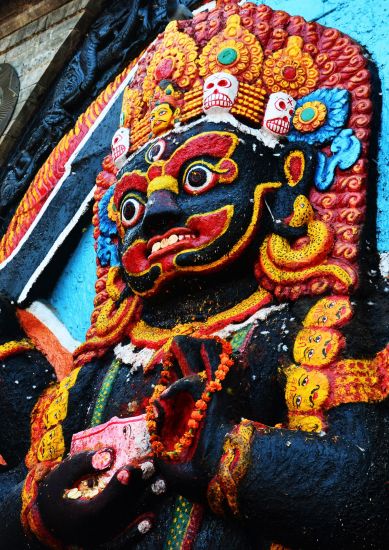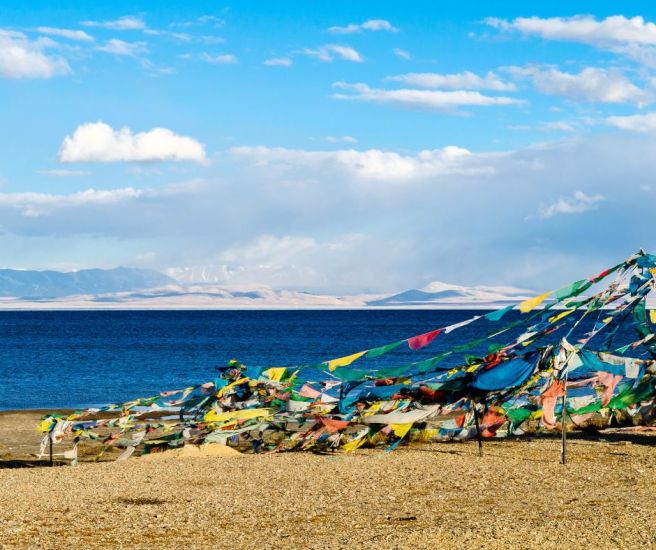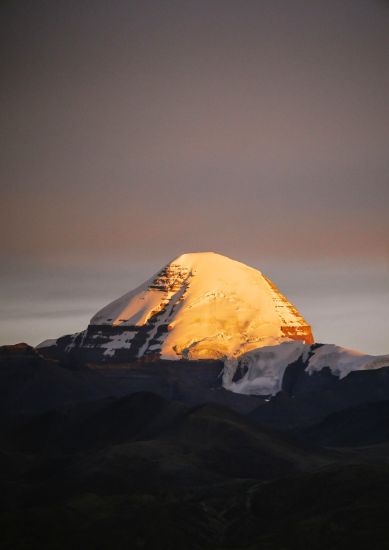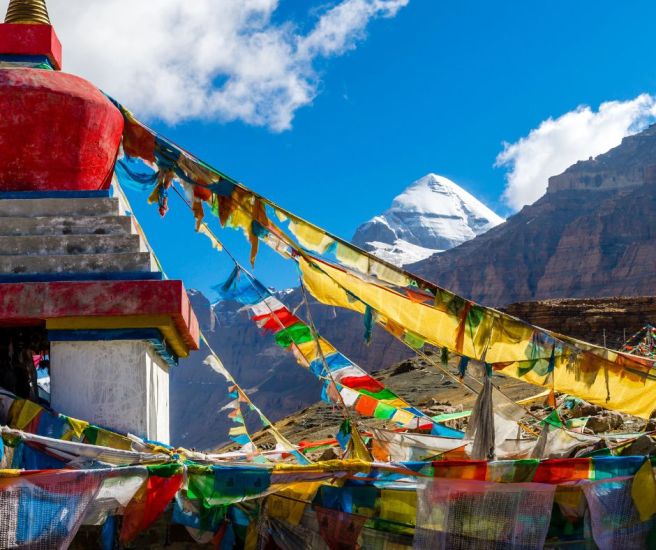Kathmandu to Kailash Tour
15 Days / Cross Border Tours
Activity
Difficulty Level
Destinations
Trip Start / End
Accommodation
Travel Style
Best time to travel
Personalized Travel Advice

Dev Raj Nepal
+977 9851096523
Detailed Itinerary
01
DAY
01
Upon arrival in Kathmandu, a vibrant city cradled within the Himalayan foothills, you’ll be welcomed with garlands and smiles by our local team. Transfer to your hotel through winding roads lined with bustling markets and fluttering prayer flags. Rest, settle in, and begin absorbing the timeless spiritual aura that permeates this ancient capital.
Arrival in Kathmandu
Upon arrival in Kathmandu, a vibrant city cradled within the Himalayan foothills, you’ll be welcomed with garlands and smiles by our local team. Transfer to your hotel through winding roads lined with bustling markets and fluttering prayer flags. Rest, settle in, and begin absorbing the timeless spiritual aura that permeates this ancient capital.
02
DAY
02
Begin the morning with a visit to the sacred Pashupatinath Temple, where the golden pagoda stands tall beside the Bagmati River. Watch priests perform morning aarti, and pilgrims offering water, flowers, and chants to Shiva as Pashupati, Lord of Beings. Witness sadhus draped in ash and orange robes, who are living symbols of devotion.
Continue to Boudhanath Stupa, one of the largest in the world, where prayer flags flutter and devotees walk clockwise spinning prayer wheels, immersing themselves in the profound calm of Tibetan Buddhist rituals.
End the day in Patan Durbar Square, a UNESCO World Heritage Site, where intricately carved temples, royal courtyards, and centuries-old statues reveal the artistic mastery of the Newar craftsmen and the vibrant history of the Kathmandu Valley.
Kathmandu Exploration
Begin the morning with a visit to the sacred Pashupatinath Temple, where the golden pagoda stands tall beside the Bagmati River. Watch priests perform morning aarti, and pilgrims offering water, flowers, and chants to Shiva as Pashupati, Lord of Beings. Witness sadhus draped in ash and orange robes, who are living symbols of devotion.
Continue to Boudhanath Stupa, one of the largest in the world, where prayer flags flutter and devotees walk clockwise spinning prayer wheels, immersing themselves in the profound calm of Tibetan Buddhist rituals.
End the day in Patan Durbar Square, a UNESCO World Heritage Site, where intricately carved temples, royal courtyards, and centuries-old statues reveal the artistic mastery of the Newar craftsmen and the vibrant history of the Kathmandu Valley.
03
DAY
03
Begin the day with a visit to Swayambhunath, the iconic stupa perched atop a hill overlooking Kathmandu. Known as the Monkey Temple, this ancient site blends Hindu and Buddhist symbolism, with prayer flags fluttering, spinning wheels humming, and monkeys scampering across stone steps. The all-seeing eyes of Buddha gaze out in every direction, inviting reflection and inner stillness. From the top, enjoy sweeping views of the Kathmandu Valley, golden roofs, and mountain ridges in the distance.
In the afternoon, head to the historical heart of Kathmandu, the Durbar Square, a UNESCO World Heritage Site, where every brick and beam holds echoes of the Malla era. Admire the exquisitely carved wooden temples, walk through ancient palace courtyards, and explore centuries-old statues that speak to the Valley’s artistic legacy. Visit Hanuman Dhoka, the old royal palace; pay respects at the Taleju Temple, built in honor of the royal goddess; and, if you’re lucky, catch a glimpse of the Kumari, the Living Goddess, through the ornate windows of her residence.
Kathmandu Exploration
Begin the day with a visit to Swayambhunath, the iconic stupa perched atop a hill overlooking Kathmandu. Known as the Monkey Temple, this ancient site blends Hindu and Buddhist symbolism, with prayer flags fluttering, spinning wheels humming, and monkeys scampering across stone steps. The all-seeing eyes of Buddha gaze out in every direction, inviting reflection and inner stillness. From the top, enjoy sweeping views of the Kathmandu Valley, golden roofs, and mountain ridges in the distance.
In the afternoon, head to the historical heart of Kathmandu, the Durbar Square, a UNESCO World Heritage Site, where every brick and beam holds echoes of the Malla era. Admire the exquisitely carved wooden temples, walk through ancient palace courtyards, and explore centuries-old statues that speak to the Valley’s artistic legacy. Visit Hanuman Dhoka, the old royal palace; pay respects at the Taleju Temple, built in honor of the royal goddess; and, if you’re lucky, catch a glimpse of the Kumari, the Living Goddess, through the ornate windows of her residence.
04
DAY
04
Today, we will begin our journey to Kailash. You leave behind the crowded valley and drive north to Bidur in the Nuwakot district. The journey winds through rural villages, green paddy fields, and tranquil hill terraces. Along the way, see traditional Newari houses, ancient shrines tucked into ridges, and glimpses of the Trishuli River. Spend a quiet evening here, enjoying crisp mountain air and views of the mid-hills that begin to rise toward the Tibetan plateau.
Drive to Bidur, Nuwakot
Today, we will begin our journey to Kailash. You leave behind the crowded valley and drive north to Bidur in the Nuwakot district. The journey winds through rural villages, green paddy fields, and tranquil hill terraces. Along the way, see traditional Newari houses, ancient shrines tucked into ridges, and glimpses of the Trishuli River. Spend a quiet evening here, enjoying crisp mountain air and views of the mid-hills that begin to rise toward the Tibetan plateau.
05
DAY
05
An early departure brings you toward the border at Rasuwagadhi, where immigration formalities mark your entry into Tibet, the land of winds and wisdom. As you ascend into the Tibetan side, vegetation changes, forests thin, the air sharpens, and the roads wind along sheer cliffs above roaring rivers.
Arrive in Kyirong (Gyirong), a quiet Himalayan town with dramatic rock walls, deep gorges, and a mystic stillness. Once a stopover for Buddhist teachers like Padmasambhava and Milarepa, it remains steeped in spiritual legacy. Spend the evening acclimatizing and adjusting to the higher altitude.
Drive to Kyirong – Cross into Tibet
An early departure brings you toward the border at Rasuwagadhi, where immigration formalities mark your entry into Tibet, the land of winds and wisdom. As you ascend into the Tibetan side, vegetation changes, forests thin, the air sharpens, and the roads wind along sheer cliffs above roaring rivers.
Arrive in Kyirong (Gyirong), a quiet Himalayan town with dramatic rock walls, deep gorges, and a mystic stillness. Once a stopover for Buddhist teachers like Padmasambhava and Milarepa, it remains steeped in spiritual legacy. Spend the evening acclimatizing and adjusting to the higher altitude.
06
DAY
06
Leave the forests behind and begin the ascent to the Tibetan Plateau, where the landscape opens into endless expanses of dry, golden plains framed by distant snowcapped mountains. The route to Saga passes high passes, turquoise lakes, and yak herder camps. This is where the scale of Tibet begins to overwhelm with vast skies, scattered villages, and mountains that feel eternal.
Saga sits on the banks of the Brahmaputra River (called Yarlung Tsangpo locally), and serves as a major rest point for Kailash pilgrims. The air is thinner, the nights colder, and the sky filled with stars as bright as fireflies.
Drive to Saga
Leave the forests behind and begin the ascent to the Tibetan Plateau, where the landscape opens into endless expanses of dry, golden plains framed by distant snowcapped mountains. The route to Saga passes high passes, turquoise lakes, and yak herder camps. This is where the scale of Tibet begins to overwhelm with vast skies, scattered villages, and mountains that feel eternal.
Saga sits on the banks of the Brahmaputra River (called Yarlung Tsangpo locally), and serves as a major rest point for Kailash pilgrims. The air is thinner, the nights colder, and the sky filled with stars as bright as fireflies.
07
DAY
07
Today’s drive brings you to the crown jewel of the pilgrimage, Lake Manasarovar, one of the holiest lakes in Asia. The road winds through arid desert valleys, sand dunes, and ridges before opening suddenly into a blue-green expanse that seems to mirror the heavens.
Manasarovar lies at the foot of Mount Kailash, and is believed to have been formed by the mind of Lord Brahma. In Hindu belief, it is the lake where Shiva and Parvati would bathe. Upon arrival, you can perform a spiritual dip in the icy waters or simply sit by the banks and watch the ever-changing colors of the lake as clouds drift over Gurla Mandhata peaks.
Spend the night near the lake in a basic guesthouse, under a sky so clear you can see the Milky Way arching over Kailash.
Note: There is an option to do a short Kora (Circumambulation) of the Lake on EV Bus.
Drive to Lake Manasarovar
Today’s drive brings you to the crown jewel of the pilgrimage, Lake Manasarovar, one of the holiest lakes in Asia. The road winds through arid desert valleys, sand dunes, and ridges before opening suddenly into a blue-green expanse that seems to mirror the heavens.
Manasarovar lies at the foot of Mount Kailash, and is believed to have been formed by the mind of Lord Brahma. In Hindu belief, it is the lake where Shiva and Parvati would bathe. Upon arrival, you can perform a spiritual dip in the icy waters or simply sit by the banks and watch the ever-changing colors of the lake as clouds drift over Gurla Mandhata peaks.
Spend the night near the lake in a basic guesthouse, under a sky so clear you can see the Milky Way arching over Kailash.
Note: There is an option to do a short Kora (Circumambulation) of the Lake on EV Bus.
08
DAY
08
Visit Chiu Monastery, perched on a rock overlooking Manasarovar. Its name, “Bird Monastery,” comes from the legend of a bird-bodied sage who meditated here. The monastery’s corridors are lined with butter lamps, ancient thankas, and windows that frame Manasarovar in golden light.
After soaking in the spiritual energy, drive a short distance to Darchen, a windswept outpost at the foot of Mount Kailash. Here begins the sacred Kora, a 3-day circumambulation believed to cleanse sins and liberate the soul from the cycle of rebirth.
Visit Chiu Gompa & Drive to Darchen
Visit Chiu Monastery, perched on a rock overlooking Manasarovar. Its name, “Bird Monastery,” comes from the legend of a bird-bodied sage who meditated here. The monastery’s corridors are lined with butter lamps, ancient thankas, and windows that frame Manasarovar in golden light.
After soaking in the spiritual energy, drive a short distance to Darchen, a windswept outpost at the foot of Mount Kailash. Here begins the sacred Kora, a 3-day circumambulation believed to cleanse sins and liberate the soul from the cycle of rebirth.
09
DAY
09
The first day of Kora begins from Yama Dwar (Gate of the Lord of Death), a portal where you symbolically leave behind your worldly self. The path follows a broad valley alongside the Lha Chu river, winding through yak pastures, glacier-fed streams, and scattered cairns.
The mountain reveals itself slowly, then suddenly. Kailash’s north face rises like a radiant pyramid of ice and rock. Prayer flags line the route, fluttering mantras into the wind. The trek ends at Dirapuk Monastery, directly facing the sacred mountain. Spend the night in basic shelter, cold, thin air, but spiritually rich atmosphere.
Trek to Dirapuk – First Day of Kora
The first day of Kora begins from Yama Dwar (Gate of the Lord of Death), a portal where you symbolically leave behind your worldly self. The path follows a broad valley alongside the Lha Chu river, winding through yak pastures, glacier-fed streams, and scattered cairns.
The mountain reveals itself slowly, then suddenly. Kailash’s north face rises like a radiant pyramid of ice and rock. Prayer flags line the route, fluttering mantras into the wind. The trek ends at Dirapuk Monastery, directly facing the sacred mountain. Spend the night in basic shelter, cold, thin air, but spiritually rich atmosphere.
10
DAY
10
Today is the most challenging and spiritually significant day. Ascend steeply toward Dolma La Pass, 5,630m, the highest point of the Kora. This section tests your physical strength and devotion. Along the way, pilgrims pass Shiva-stones, sky burial sites, and heaps of offerings, representing rebirth, release, and transformation.
At the pass, at 5,630m, multicolored prayer flags blanket the ridge. Leave behind any burdens, mentally or symbolically, at this sacred high point. From here, descend steeply past Gauri Kund, the sacred lake of Parvati, gleaming like an emerald jewel below.
Trek through a narrow canyon beside a stream, eventually arriving at Zuthulphuk, where Milarepa is believed to have meditated. Stay overnight in a simple guesthouse, surrounded by cliffs and silence.
Trek to Zuthulphuk – Second Day of Kora/Parikrama
Today is the most challenging and spiritually significant day. Ascend steeply toward Dolma La Pass, 5,630m, the highest point of the Kora. This section tests your physical strength and devotion. Along the way, pilgrims pass Shiva-stones, sky burial sites, and heaps of offerings, representing rebirth, release, and transformation.
At the pass, at 5,630m, multicolored prayer flags blanket the ridge. Leave behind any burdens, mentally or symbolically, at this sacred high point. From here, descend steeply past Gauri Kund, the sacred lake of Parvati, gleaming like an emerald jewel below.
Trek through a narrow canyon beside a stream, eventually arriving at Zuthulphuk, where Milarepa is believed to have meditated. Stay overnight in a simple guesthouse, surrounded by cliffs and silence.
11
DAY
11
A gentler walk awaits you today. The landscape gradually opens into wider plains, with views of grazing animals and distant mountains. Return to Darchen, completing the full 52-kilometer circumambulation of Mount Kailash. Many report a profound sense of release and renewal at this point as the physical, emotional, and spiritual circle now complete.
Trek to Darchen – Closing the Circle
A gentler walk awaits you today. The landscape gradually opens into wider plains, with views of grazing animals and distant mountains. Return to Darchen, completing the full 52-kilometer circumambulation of Mount Kailash. Many report a profound sense of release and renewal at this point as the physical, emotional, and spiritual circle now complete.
12
DAY
12
Begin your return across the vast, open landscapes of western Tibet. The journey retraces your route back to Saga, offering a new perspective on the mountains and deserts you crossed. It’s a day to rest, recover, and reflect on the sacred energy of Mount Kailash now etched within.
Drive to Saga
Begin your return across the vast, open landscapes of western Tibet. The journey retraces your route back to Saga, offering a new perspective on the mountains and deserts you crossed. It’s a day to rest, recover, and reflect on the sacred energy of Mount Kailash now etched within.
13
DAY
13
Drive back across barren hills and quiet valleys toward Kyirong, now a familiar yet serene outpost. The oxygen-rich air feels welcome, and the warmer climate eases your body after the high-altitude trek. Relax, enjoy a hot meal, and recount your memories with fellow travelers.
Drive to Kyirong
Drive back across barren hills and quiet valleys toward Kyirong, now a familiar yet serene outpost. The oxygen-rich air feels welcome, and the warmer climate eases your body after the high-altitude trek. Relax, enjoy a hot meal, and recount your memories with fellow travelers.
14
DAY
14
Re-enter Nepal and drive back to Kathmandu through winding mountain roads. The landscapes shift dramatically again, from bare Tibetan plateaus to green valleys and bustling Nepali towns. Arrive in Kathmandu and return to your hotel. The comforts of the city, the warmth of Nepali hospitality, and the contrast to Kailash will offer a soft landing after a deeply profound journey.
Drive to Kathmandu
Re-enter Nepal and drive back to Kathmandu through winding mountain roads. The landscapes shift dramatically again, from bare Tibetan plateaus to green valleys and bustling Nepali towns. Arrive in Kathmandu and return to your hotel. The comforts of the city, the warmth of Nepali hospitality, and the contrast to Kailash will offer a soft landing after a deeply profound journey.
15
DAY
15
With blessings from Shiva, the tour ends here. You leave behind a trail of high mountains, sacred lakes, and winds that once whispered through the robes of sages. After breakfast, you will be transferred to the airport for departure.
Departure
With blessings from Shiva, the tour ends here. You leave behind a trail of high mountains, sacred lakes, and winds that once whispered through the robes of sages. After breakfast, you will be transferred to the airport for departure.
Includes / Excludes
Inclusions
-
All accommodations on Hotels/Lodges/Tea House the twin sharing basis
-
2 Days of stay at Dormitory
-
English speaking Guide
-
Transportation as per the itinerary
-
Entry fee of mentioned places
-
Tibet Travel permit
-
Portable oxygen cylinder in vehicle
Exclusions
-
Travel Insurance
-
Beverages (Hard of Soft Drinks)
-
Meals not mentioned in the itinerary
-
Expenses of Porters
-
Extra costs incurred due to unforeseen events
-
Horse or Yak Ride Fee
-
Chinese Visa Fee
-
International Airfare
Trip Info
Kathmandu to Kailash Tour
The Kathmandu to Kailash Tour is a spiritual and overland journey that takes travelers from the historic city of Kathmandu in Nepal to the sacred landscapes of Tibet, culminating in the pilgrimage to Mount Kailash, a mountain revered by Hindus, Buddhists, Jains, and followers of Bon. The tour begins in Kathmandu because it serves as the most accessible and well-connected gateway to Tibet, especially for travelers coming from South Asia and beyond. Kathmandu also allows time for cultural exploration, last-minute preparations, and necessary travel permits before entering the Tibetan Autonomous Region of China via the Rasuwa–Kyirong border.
The tour is entirely overland, offering a gradual ascent that helps travelers acclimatize to the high altitudes of the Tibetan Plateau. Over several days, you’ll drive through a dramatic and varied landscape, from deep valleys and turquoise lakes to wide open plains and high mountain passes, reaching the sacred site of Mount Kailash (6,638 m). The journey includes the optional Kailash Kora, a demanding but deeply spiritual 3-day trek around the mountain. This is not just a sightseeing tour, but a powerful personal and cultural experience, a pilgrimage that many believe helps cleanse lifetimes of karma.
This journey is ideal for travelers seeking a deeply spiritual, culturally immersive, and physically rewarding experience. Whether you come as a pilgrim or an explorer, the Kathmandu to Mount Kailash Tour offers a rare opportunity to witness some of the most sacred landscapes and high-altitude terrains on Earth. If you are drawn to remote travel, intrigued by ancient traditions, and open to basic living conditions in exchange for a truly transformative experience, this tour is for you.
That said, it’s important to note that this is a challenging overland journey, reaching altitudes above 5,000 meters (16,400 ft). The road conditions in Tibet can be rough, and accommodation becomes increasingly basic as you approach Mount Kailash. The optional Kailash Kora involves trekking 52 kilometers over three days, including a high pass (Dolma La) at 5,630 meters. While no technical climbing is involved, reasonable physical fitness, mental preparation, and a flexible attitude are essential. With the right mindset, this tour is not only possible, it can be one of the most meaningful journeys of your life.
The best time to undertake the Kathmandu to Kailash Tour is from May to September, when weather conditions across the Himalayan highlands and the Tibetan Plateau are most favorable.
During this period, daytime temperatures in the Kailash region typically range between 10°C to 18°C (50°F to 64°F), while nighttime temperatures can drop to 0°C to 5°C (32°F to 41°F). Although conditions are high-altitude and dry, the weather is generally clear, making it ideal for both overland travel and the Kailash Kora, the revered three-day trek around the sacred mountain.
In Nepal, the Kathmandu Valley enjoys mild spring and summer temperatures ranging from 15°C to 28°C (59°F to 82°F), with occasional monsoon showers between June and August. However, the rain rarely affects travel in Tibet, which lies in a rain shadow zone and remains largely dry even during the South Asian monsoon.
The border crossing between Nepal and Tibet at Rasuwa–Gyirong is typically open and accessible during these months, and road conditions are at their best. Whether you’re making this journey for spiritual fulfillment, adventure, or cultural discovery, May to September offers the most reliable window for a smooth, safe, and visually stunning experience.
Private Vehicles for Individual Travelers and Small Groups
For individual travelers, couples, or small private groups, comfortable private vehicles such as SUVs or air-conditioned cars will be used for all transfers and sightseeing. These vehicles are ideal for navigating both urban traffic in Kathmandu and the rugged terrain of the Tibetan plateau.
Handpicked for their comfort, safety, and reliability, they are well-suited for long drives and variable road conditions, ensuring a smooth and enjoyable journey throughout the tour.
Minivans and Tourist Buses for Larger Groups
For groups of 4 to 8 travelers, modern minivans will be arranged, offering ample space, cushioned seating, and air conditioning to enhance comfort during long overland drives.
For groups of 9 or more, we use well-maintained tourist buses designed to accommodate both passengers and luggage comfortably. These vehicles are spacious, stable, and ideal for scenic drives across the Himalayas and the vast open landscapes of Tibet. All group vehicles are equipped with air conditioning and experienced drivers familiar with high-altitude routes.
No matter the group size, all vehicles used on the Kathmandu to Kailash tour are carefully selected to provide a safe, comfortable, and memorable travel experience.
Food along the Kathmandu to Mount Kailash route varies significantly between regions — from the diverse cuisine of Kathmandu to the simpler, traditional meals found along the Tibetan Plateau and during the Kailash Kora.
In Kathmandu
Kathmandu offers a wide variety of food choices. From local Nepali staples like dal bhat, momo, thukpa, and Newari dishes, to international options including Western, Indian, Chinese, Japanese, and vegetarian/vegan cuisine. Travelers can enjoy excellent meals that suit all preferences. Meals are served in clean, well-rated hotels and restaurants.
During the Overland Drive through Tibet
As the journey moves north toward Mount Kailash, food becomes simpler and more traditional. Guesthouses and local eateries along the route (in places like Gyirong and Saga) serve Tibetan and basic Chinese-style meals. Common dishes include noodle soups (thukpa), momos (dumplings), fried rice, boiled vegetables, shya phaley (fried bread), and sometimes yak or chicken-based meals.
While options are more limited than in Kathmandu, meals are warm, filling, and generally vegetarian-friendly, especially near pilgrimage towns. Hot tea, boiled water, and soups are commonly offered to help travelers stay hydrated and warm.
During the Kailash Kora
Once you begin the 3-day trek around Mount Kailash, food becomes very basic. Meals are provided at simple tented teahouses or monastery kitchens, usually consisting of rice, instant noodles, eggs, soup, biscuits, and occasionally basic stir-fried vegetables or lentils.
Western-style meals are not available during the Kora. Many group tours arrange vegetarian Indian-style meals, but we recommend bringing your own high-energy snacks, dry fruits, or protein bars to supplement your diet during this part of the journey.
Dietary Notes
Vegetarian meals are widely available throughout the tour. Vegan and other dietary needs can be accommodated in Kathmandu and major towns with advance notice, though flexibility is essential in remote areas. Boiled or bottled water is available daily.
Accommodation on the Kathmandu to Kailash tour ranges from comfortable city hotels to basic lodges and shared dormitories in remote high-altitude regions. We ensure that all options are clean, safe, and the best available in each location, balancing comfort with the practicalities of traveling in remote areas.
In Kathmandu
In Kathmandu, you’ll stay in a well-rated hotel offering modern amenities such as private bathrooms, hot showers, Wi-Fi, and in-house dining. These hotels are centrally located and provide a relaxing base before and after the overland journey. Upgrades to boutique or luxury properties are available on request.
On the Road in Tibet
As the journey continues through Tibet (Gyirong, Saga, Darchen), accommodations vary depending on the remoteness of each town:
Hotels in larger towns offer basic rooms with attached bathrooms, hot water (limited hours), and electric blankets.
Lodges and Guesthouses are simpler, often family-run establishments with twin or triple rooms, common bathrooms, and limited heating. While modest, they are generally clean and welcoming.
Tea Houses in smaller villages may offer basic beds, shared toilets, and minimal services, ideal for experiencing the rugged charm of the Tibetan plateau.
Electricity and hot water may not be consistent, and internet access is limited or unavailable in remote areas.
During the Kailash Kora
Accommodation during the 3-day Mount Kailash Kora is dormitory-style in very basic guesthouses or monastery shelters in places like Dirapuk and Zutulpuk. Facilities are minimal: expect shared rooms, common toilets (often squat-style), and no running water. There is no heating, and temperatures can drop below freezing, so warm sleeping bags and proper gear are essential.
While simple, these accommodations offer shelter and a shared experience with fellow pilgrims, adding to the spiritual atmosphere of the journey.
Travelers joining the Kathmandu to Mount Kailash tour must arrange the necessary visas and permits in advance. This process involves two key steps: acquiring a Chinese Visa and obtaining a Tibet Travel Permit.
Chinese Visa:
All travelers must apply for a Chinese visa from their nearest Chinese embassy or consulate at least one month prior to the tour. This is a mandatory requirement for entering Tibet. We recommend choosing a tourist (L) visa unless otherwise advised. Once your Chinese visa is issued, you’ll need to email us a clear scan of your passport and visa page, which is required for the next step.
Tibet Travel Permit:
With your visa and passport copy, we will arrange the Tibet Travel Permit on your behalf in Kathmandu. This permit is issued by the Tibet Tourism Bureau and is essential for traveling in the Tibetan Autonomous Region, including Mount Kailash. The application takes several working days, so early submission of your documents is important.
For those entering Nepal before the tour, a Nepal visa is available on arrival at Tribhuvan International Airport. Most nationalities are eligible for a 15/30/90-day visa, and the process is simple and efficient.
All documentation will be double-checked before your departure to ensure a smooth and uninterrupted journey.
Essential Documents
- Valid passport (minimum 6 months’ validity)
- Printed Tibet Travel Permit (provided en route)
- 4 passport-size photos
- Copies of travel insurance
Clothing (Layered for Varying Weather)
- 2–3 thermal innerwear (top and bottom)
- 3–4 sets of breathable T-shirts and trekking pants
- 1–2 fleece jackets or warm sweaters
- 1 down jacket (essential for nights and high altitudes)
- Waterproof windbreaker or rain jacket (July is monsoon season in Nepal)
- Light gloves and warm gloves
- Woolen cap/beanie and sun hat/cap
- 5–6 pairs of socks (warm + breathable cotton)
- Undergarments (quick-dry preferred)
- Sleepwear
- Waterproof trekking boots
- Comfortable walking shoes or sandals (for around camps)
- Slippers for guesthouse use
Health & Others
- Sunglasses with UV protection
- High SPF sunscreen & lip balm
- Moisturizer and face wipes
- Toothbrush, toothpaste, biodegradable soap, shampoo
- Quick-dry towel
- Toilet paper and wet wipes
- Personal medications (include high-altitude medicine, if advised)
- Power bank/portable charger
- Energy bars, dry fruits, nuts
- Ziplock bags for organizing items
This journey to Mount Kailash takes you to altitudes well above 4,500 meters, with the highest point being Dolma La Pass at 5,630 meters. Our itinerary has been carefully designed to allow your body time to adjust gradually, with overnight stays in Kyirong (2,800m), Saga (4,300m), and Lake Manasarovar (4,550m) before beginning the Kora.
We avoid rapid ascents and schedule sufficient rest days to reduce the risk of Acute Mountain Sickness (AMS). Your comfort and safety are our top priorities throughout the pilgrimage.
Acclimatization Tips
- Stay well-hydrated: Drink at least 3-4 liters of water daily.
- Walk slowly: Pace yourself and avoid overexertion.
- Eat light and rest well: Our vegetarian meals support digestion and energy.
- Stay warm: Layer up as temperatures fluctuate drastically.
- Inform the guide immediately if you feel symptoms such as headache, nausea, dizziness, or fatigue.
Altitude Precautionary Measures
We travel with a first-aid kit, portable oxygen cylinders, and a support crew experienced in high-altitude care. In case of serious altitude issues, we arrange for immediate descent or evacuation as needed. Your guides are trained to monitor symptoms and respond quickly.
The Kailash Kora, also known as the Kailash Parikrama or circumambulation, is a sacred three-day trek around Mount Kailash, a deeply spiritual experience undertaken by pilgrims from across the world. The route is approximately 52 kilometers long and circles the entire base of the mountain. In Hindu, Buddhist, Jain, and Bon traditions, walking this path is believed to cleanse lifetimes of karma, and completing even one full Kora is considered highly auspicious.
The trek is not technically difficult but is physically demanding due to high altitude, thin air, and basic living conditions. The route crosses Dolma La Pass at 5,630 meters, the highest point of the Kora, often snow-covered and windy even in the summer. Along the way, you pass through dramatic landscapes including ancient valleys, glacial rivers, and sacred sites such as the Tarboche flagpole, Dirapuk Monastery, and Zutulpuk Monastery. Each day brings breathtaking mountain views, quiet moments of reflection, and a strong sense of shared purpose with fellow pilgrims. Some chant prayers, others walk in silence, and a few perform full-body prostrations for every step.
The experience is intensely personal. Many describe the presence of the mountain as humbling and transformative, while others speak of a deep inner calm that grows stronger with every step. Despite the physical challenge, the journey often feels lighter with time, as if the landscape itself supports your movement. The Kailash Kora is a profound spiritual journey.
The journey from Kathmandu to Mount Kailash is a scenic overland route that unfolds across changing landscapes and timeless cultural settings. It begins in the Kathmandu Valley and gradually ascends through forested hills and quiet villages toward the Rasuwa–Kyirong border, the entry point into Tibet. The road climbs steadily, offering expansive views, remote settlements, and the first glimpses of the high Himalayan terrain.
Once inside Tibet, the drive continues across broad plateaus, open skies, and ancient trade routes. Travelers pass through towns such as Kyirong, Saga, and Darchen, each surrounded by vast mountain ranges and prayer-flag-lined passes. The route offers views of sacred rivers, alpine meadows, and glacial lakes, including the shimmering waters of Lake Manasarovar. Yaks graze on the open plains, and distant snow peaks rise above the horizon as the road winds toward Mount Kailash, the spiritual center of the journey.
Daily drives are paced to allow for rest, gradual acclimatization, and quiet moments to take in the high-altitude beauty. The overland nature of this tour creates a strong connection to the land, where every mile adds depth to the experience and prepares you for the days ahead at Kailash.
FAQs
Personalized Travel Advice

Dev Raj Nepal
+977 9851096523
